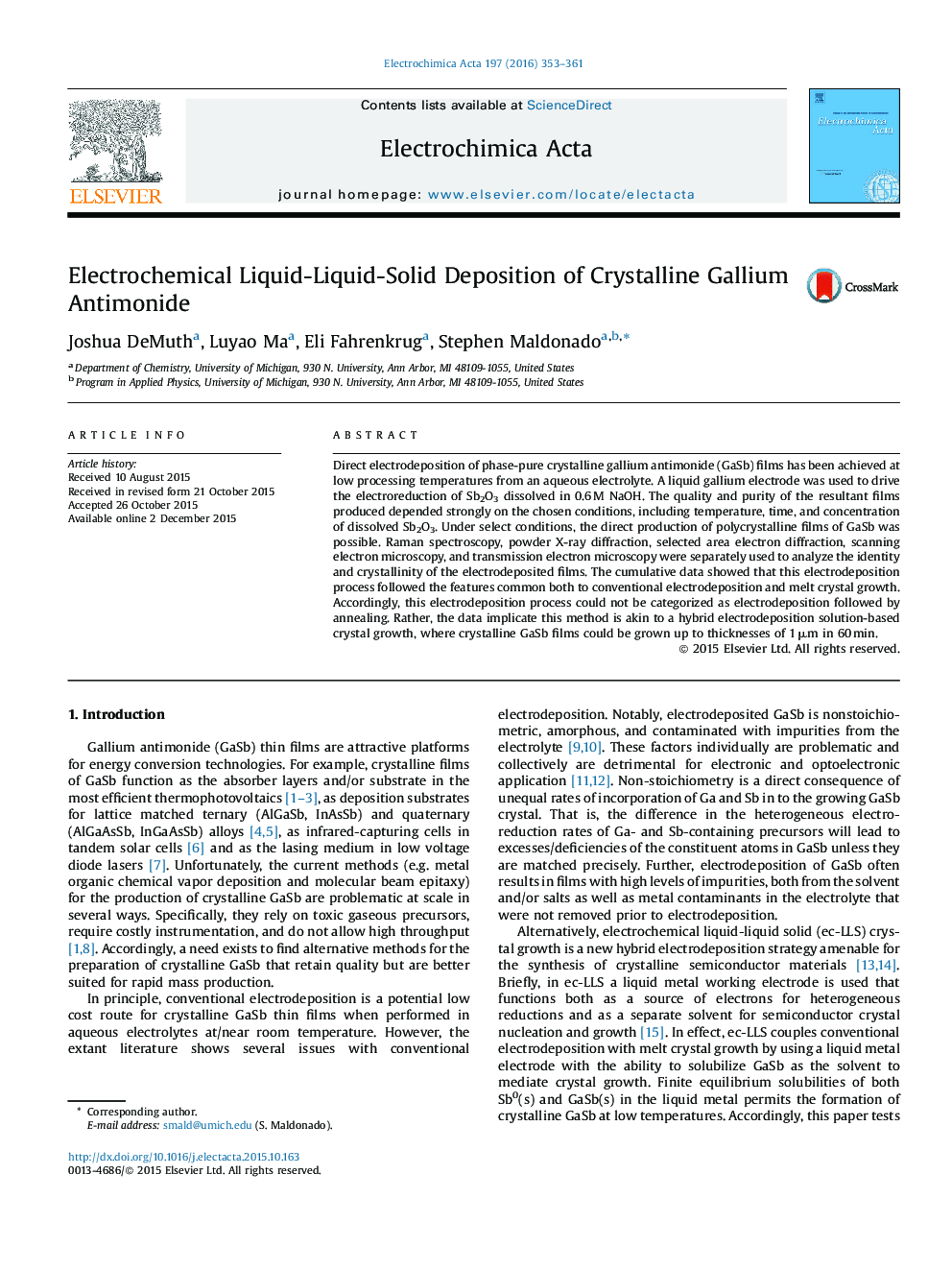| Article ID | Journal | Published Year | Pages | File Type |
|---|---|---|---|---|
| 6608113 | Electrochimica Acta | 2016 | 9 Pages |
Abstract
Direct electrodeposition of phase-pure crystalline gallium antimonide (GaSb) films has been achieved at low processing temperatures from an aqueous electrolyte. A liquid gallium electrode was used to drive the electroreduction of Sb2O3 dissolved in 0.6 M NaOH. The quality and purity of the resultant films produced depended strongly on the chosen conditions, including temperature, time, and concentration of dissolved Sb2O3. Under select conditions, the direct production of polycrystalline films of GaSb was possible. Raman spectroscopy, powder X-ray diffraction, selected area electron diffraction, scanning electron microscopy, and transmission electron microscopy were separately used to analyze the identity and crystallinity of the electrodeposited films. The cumulative data showed that this electrodeposition process followed the features common both to conventional electrodeposition and melt crystal growth. Accordingly, this electrodeposition process could not be categorized as electrodeposition followed by annealing. Rather, the data implicate this method is akin to a hybrid electrodeposition solution-based crystal growth, where crystalline GaSb films could be grown up to thicknesses of 1 μm in 60 min.
Related Topics
Physical Sciences and Engineering
Chemical Engineering
Chemical Engineering (General)
Authors
Joshua DeMuth, Luyao Ma, Eli Fahrenkrug, Stephen Maldonado,
